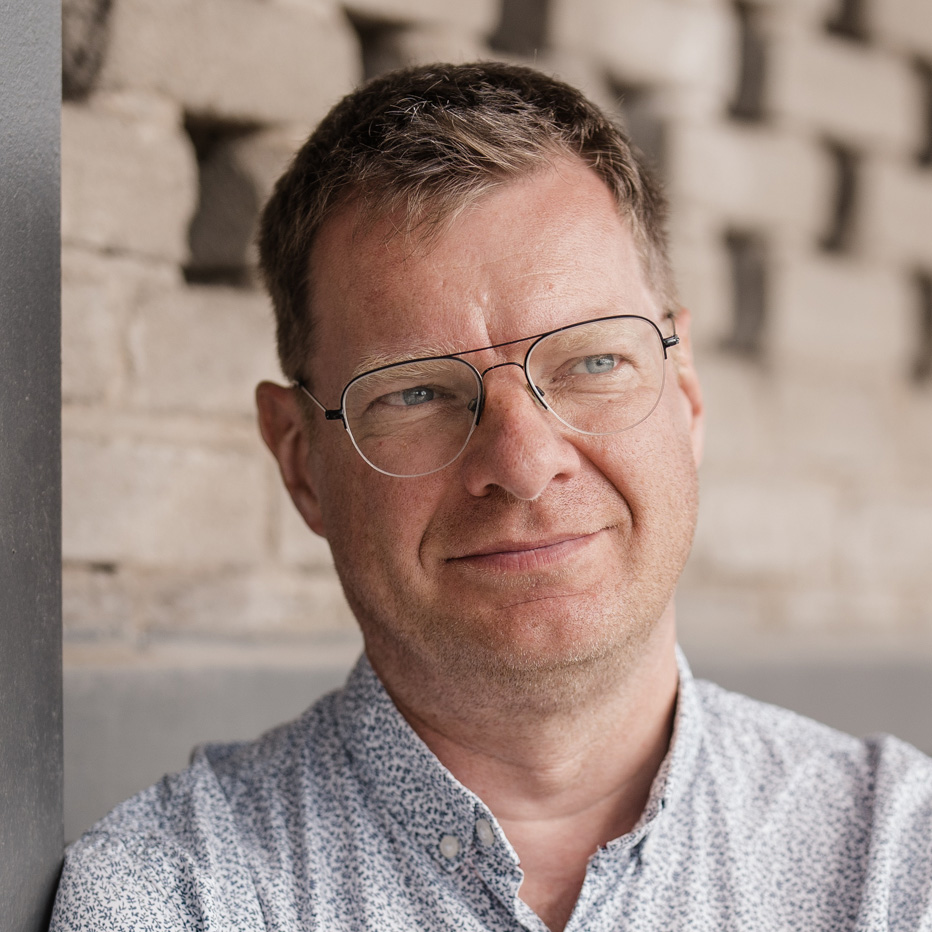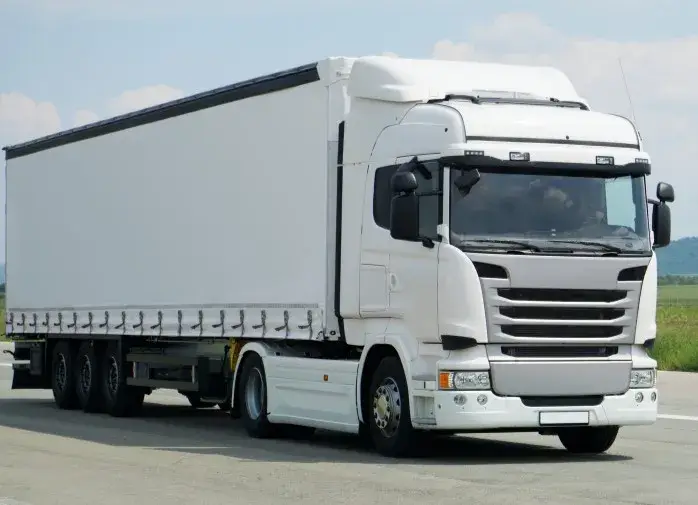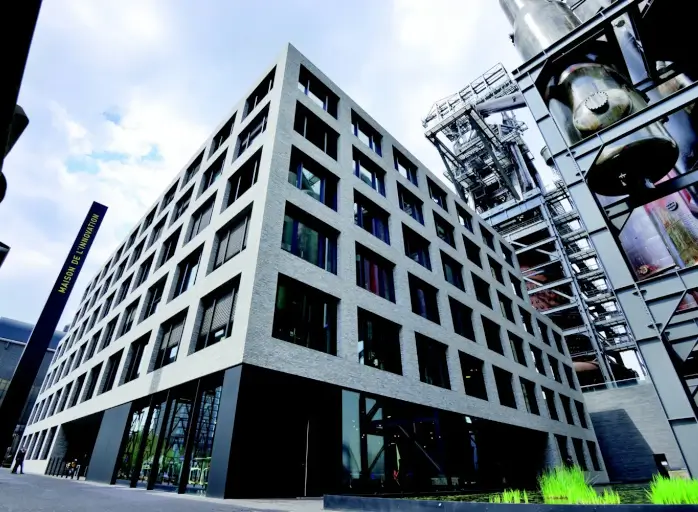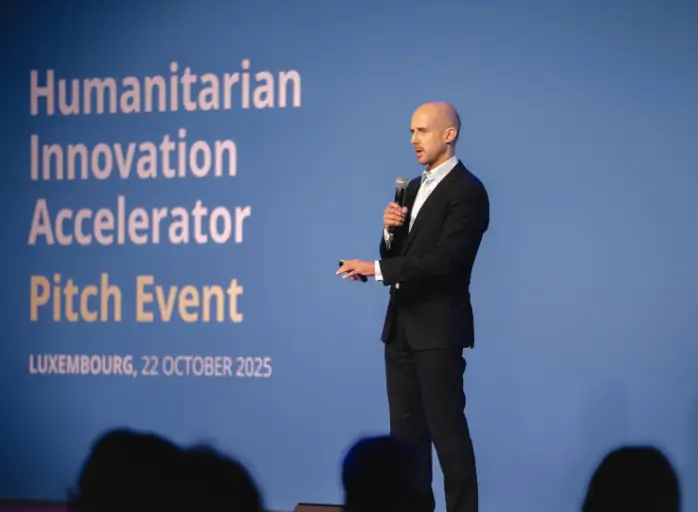
Wood: a hero of the future
The 2023 edition of the Wood Cluster Forum focused on wood as a material destined to become indispensable in the economy of the future, especially in the construction sector. Sustainability was particularly at the heart of the debates.
 Jean-Michel Gaudron
Jean-Michel Gaudron
 With over 200 people attending the 3rd edition of the Wood Cluster Forum at the Hesperange Cultural Centre on Thursday 19 October, the consensus is clear: the wood industry is on the rise. Sasha Baillie, CEO of Luxinnovation, did not miss this point in her opening speech: "Your significant presence here this morning demonstrates how the wood industry is a key topic in Luxembourg, and that all exchanges on this subject are of utmost importance."
With over 200 people attending the 3rd edition of the Wood Cluster Forum at the Hesperange Cultural Centre on Thursday 19 October, the consensus is clear: the wood industry is on the rise. Sasha Baillie, CEO of Luxinnovation, did not miss this point in her opening speech: "Your significant presence here this morning demonstrates how the wood industry is a key topic in Luxembourg, and that all exchanges on this subject are of utmost importance."
Discussions spanned over a wide range of topics: strategies and success factors for the wood sector in Luxembourg; innovative projects and regional flagship initiatives in the field of wood construction; best practices for carbon emissions reduction, with emphasis on implementation examples in Luxembourg and the Greater Region; and sustainable projects along the wood value chain that significantly contribute to reducing the climate impact of the construction sector in Luxembourg. The experts and panellists invited to the forum emphasised the relevance of wood in all its forms, illustrating their points with numerous concrete examples.
Barriers to overcome
"We want to make wood a natural choice of building material for the construction of multi-storey buildings," explained Niels Morsing, Director of the Danish Technological Institute, who came to present the European project "Build-in-Wood", which he coordinates.
Despite a number of barriers related to a lack of industrial know-how, the absence of technological, regulatory or legislative standardisation, and a lack of "open-source" information, this project has established design and construction systems for multi-story wood buildings and demonstration buildings for further testing. "We have also developed genuine international collaboration for wood construction," he added.
The "community" that has developed around this programme currently brings together over 200 members throughout Europe, while the consortium itself has 21 partners from 12 different countries (Germany, England, Austria, Canada, Denmark, Spain, Finland, Greece, Italy, Norway, Romania, and Sweden).
A dynamic ecosystem
In Luxembourg, the wood industry represents more than 1,500 private companies directly or indirectly involved in the nine links that make up the value chain. This was revealed by Ralf Köhler, Manager of the Luxembourg Wood Cluster at Luxinnovation, who unveiled the updated sector mapping figures, the previous version of which dated back to 2019.
The Market Intelligence team at Luxinnovation comprehensively adapted and analysed the mapping of the wood sector in detail as part of the new sustainability enabler ecosystem methodology in Luxembourg.
More than three-quarters of the recorded companies have less than 50 employees, and 60% have less than 10. "This analysis shows a dynamic ecosystem in continuous evolution. Nearly one-fifth of the existing companies were created between 2019 and 2022," emphasised Mr Köhler.
Around sixty of these companies fall into the category of "sustainable development enablers," focusing in particular on smart buildings, energy efficiency, and circular economy.
It is for this entire ecosystem that the Luxembourg Wood Cluster has been working since its creation in 2017. "Establishing a genuine circular economy of wood materials and products from construction is a priority, with an emphasis on local resources," added Mr Köhler.
Recent legislative developments are moving in the right direction, according to Gilles Reding, Director of Consulting & Services at the Chamber of Skilled Trades. "All recent initiatives taken, whether the Climate Law of 2020 or the National Integrated Plan for Energy and Climate, are a great opportunity for the wood sector. One of the challenges to be met will be that of qualified labour. We are multiplying initiatives in this regard with the Federation of Artisans."
Thinking locally
 Sustainability was at the heart of all the speeches and interventions at this forum. For Mark Weber, CEO of Steffen Holzbau, for example, it is important to capitalise on the increasing acceptability of wood as a material. "It is essential for preventing CO2 emissions," he underlined.
Sustainability was at the heart of all the speeches and interventions at this forum. For Mark Weber, CEO of Steffen Holzbau, for example, it is important to capitalise on the increasing acceptability of wood as a material. "It is essential for preventing CO2 emissions," he underlined.
According to him, the message is getting through, as architects and engineers are increasingly incorporating wood into their designs, as well as in their specialisations. With an unavoidable "physical" limit: the limitation of "regional" resources. "Being able to rely more on local wood requires innovation and working with engineers capable of optimising the use of this material to be more efficient with the least possible amount of wood."
Alex Gambroudes, Director of Kronospan Luxembourg, echoed similar sentiments when he stated that the only way to build quickly and sustainably is to use timber. "And the goal is to achieve sustainability by ultimately aiming for a 50% recycled wood rate. It is currently at 20%."
If we continue to think only in terms of concrete and steel, we will not find a CO2 solution.
This is also the direction that real estate developer IKO Real Estate is taking, committing to a global objective of reducing carbon footprint in all its projects. "For this, we prioritise the 'Renovation' component, knowing that demolishing and rebuilding has a greater impact on carbon emissions. And in this context, it is evident that wood also helps to significantly reduce carbon footprint," explained Stéphane Valet, project director at IKO.
Régis Bigot, Innovation Project Manager at Neobuild, emphasised the proper use of wood, beyond just technological aspects. "Simple things can also be effective," he pointed out. "Let's not forget that wood, even though it is clearly a material of the future, is not inexhaustible. Preserving wood in its natural environment, standing, is as important as cutting it."
For the Ordre des Architectes et des Ingénieurs-Conseils (OAI), it is a daily task to ensure that administrative and financial constraints – and sometimes inconsistencies – diminish. "We recommend, for example, the establishment of a single prescription document that governs wood construction. There is no need to reinvent the wheel for this: we can draw inspiration from neighbouring countries with a long tradition of wood construction."
A "low carbon" roadmap
As part of a collaboration with the Ministry of Energy and Spatial Planning, the OAI has been working since 2020 on a study for the use of bio-based construction materials in Luxembourg. After identifying, from around forty companies active in the field, the constraints and problems encountered, solutions are being developed within four distinct working groups: (i) Legal and regulatory framework; (ii) Bio-sourced materials pact; (iii) Best Practices / Flagship projects in bio-sourced materials; (iv) Financial aspect of sustainable projects.
"This involves projects such as drafting a first draft for a charter relating to a pact for bio-sourced materials, the implementation of a call for flagship projects, or the development of a first Vademecum on subsidies for sustainable projects," described Laurent Heinen, Associate Engineer at INCA Ingénieurs Conseils Associés.
It is in this practical approach that the government presented, in mid-June, the "Low Carbon Construction Roadmap" for Luxembourg. This initiative has three objectives, as reiterated by Paul Schosseler, Director within the Ministry of Energy and Spatial Planning: "establishing an annual carbon budget to link the carbon footprint of a building with national sectoral targets; assessing construction and renovation projects based on existing data; and developing decarbonisation solutions to fill the gaps identified." All while keeping a very close eye on the evolving situation in terms of wood availability. "Studies show that forests will soon no longer be able to absorb all the CO2 they emit overall. It is therefore crucial to preserve the forests."
“Preserving wood in its natural environment, standing, is as important as cutting it."
The Wood Cluster Forum also highlighted some remarkable wood building achievements throughout the country. The urban district under the prism of wood construction was also presented on the former industrial site of Esch-Schifflange (Metzeschmelz). An inherently circular neighbourhood that emphasises the reuse of existing buildings and materials by assigning them new functions. Special attention is also given to optimising resource flows. With two quantified objectives: 50% of steel reused from the demolition of old buildings and a rate of use of bio-sourced materials during the construction phase, compared to the generally observed national average of 12%.
Photos: Erelis







